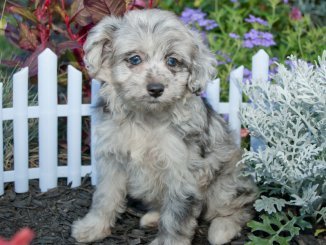The beagle is a small hound dog of English origin and is also commonly referred to as the English beagle. These dogs are merry, curious, friendly, and make loyal family companions.
This dog is an excellent hunting partner with a keen sense of smell.
Beagles have plenty of energy and love to play with people and other dogs. This dog will make a good addition to a family with children because of its playful and loving nature.
Beagles typically cost between $500–$2,000.
TABLE OF CONTENTS
Beagle Characteristics & Overview

| Common names: | Beagle, English beagle |
| Origin: | United Kingdom, Great Britain, England |
| Breed group: | Hound group |
| Size: | Small |
| Height: | Under 13 inches or 13–15 inches |
| Weight: | Under 20 pounds or 20–30 pounds |
| Colors: | Black, tan, white, and tricolor |
| Coat: | Smooth, double, short-haired coat |
| Life expectancy: | 10–15 years |
| Temperament: | Friendly, energetic, curious, lively |
| Shedding: | Moderate, seasonal shedders |
| Barking tendency: | Vocal |
| Cost: | $500–$1,300 |
Origin & Purpose
The exact origin of the beagle is unknown, although it is believed that this breed dates back to 5th century Greece. Modern-day varieties first became well known in England in the 1500s, where they hunted in packs alongside their owners.
The beagle was bred for the specific purpose of hunting because of the dogs’ superb sense of smell. The first specimens in England were much smaller and known as pocket beagles.
Today, they are often used as sniffer dogs in airports because the dogs can be trained to find contraband while ignoring other scents.
Lifespan
On average, beagles live for 10–15 years when healthy and well-looked after. Give these dogs plenty of exercise, monthly grooming sessions, and a healthy diet to prevent illness and health problems.
Their lifespan may be shortened due to canine cognitive disorder, obesity, or lung cancer.
Beagle Appearance

Beagles look similar to the larger English foxhound with a friendly face, floppy ears, and dark brown or hazel eyes. They have a smooth, shiny coat with short hair that comes in a wide variety of colors and color combinations.
The American Kennel Club (AKC) recognizes two types that differ in height and weight.
Height and Weight
Beagles are considered small dogs, with a height at the withers of 13–15 inches, and a weight of 20–30 pounds. There is also a smaller type, measuring below 13 inches in height and weighing less than 20 pounds.
Beagle dwarfism is a genetic issue in which the dog is shorter than the standard size and in this case, the dog’s legs may also be dwarfed.
A beagle’s weight should remain in a healthy range, below 20 pounds for the smaller type and up to 30 pounds for the larger type, to prevent obesity and health issues.
These dogs are avid eaters and often search in pantries or trash cans looking for food.
Colors
Beagles are most commonly tri-color with black, white, and tan patches. The second most common color combination is red and white.
Other standard colors include various combinations of black, tan, red, white, bluetick, brown, and blue with less common colors being lemon and fawn.
All beagles, despite their color combinations, have a prominent white tip on their tail which helps hunters spot the dogs in tall grass.
Coat
The beagle has a smooth and shiny double coat that protects it from the rain while hunting. They shed moderately with short hair that is barely noticeable.
As seasonal shedders, these dogs shed more hair during spring because their coats naturally become thicker during winter. Brushing at least once a week with a medium-bristle brush will promote hair growth and limit shedding.
Personality and Temperament

According to the AKC breed temperament guide, the beagle is a curious, friendly, and loyal companion that is generally easy-going.
This makes the breed a suitable family dog that is good with children and other dogs.
This purebred is best suited to active families or families with other pets because they prefer to have company at all times.
Beagles are loud dogs who bark and howl often without any reason. Due to this loud nature, the dogs are not suitable for families living in quiet areas like apartments.
Barking
Beagles are loud dogs that bark, bay, and howl which was originally used to alert hunters that the dog had caught something.
The standard bark is used when they receive a treat, the doorbell rings, or when the dogs hear other daily noises.
These dogs bay when they find prey during hunting, and the howl is usually a signal that it is bored, sad, or hears other howling dogs.
Training, familiarizing your dog with everyday noises, and soothing it when it’s upset, can help minimize barking. However, barking is a natural instinct and they will likely always have their bark.
Beagle Care

Caring for beagles is straightforward because they require occasional grooming and any type of companionship.
They are easy-going and may become lethargic as they mature, although young and old dogs should get plenty of play time and exercise with their family. When training, they are sometimes stubborn and tend to outsmart humans.
Food Needs
Beagles will eat as much food as they are given and should be fed strictly. Feed your beagles between a ¾ cup to 1½ cups of high-quality dry dog food split into two portions each day.
The amount of food given will depend on the dog’s size, activity level, and age.
This breed is prone to obesity because they will eat from the garbage or any food that is within reach.
Grooming Needs
Beagles should be brushed at least once a week and bathed once a month or when they have rolled in something dirty. Brush their teeth once or twice a week and trim their nails once a month unless the nails are noticeably long before then.
Their ears should be checked bi-weekly for signs of infection or wax build-up because the drop-ear shape of the dogs’ ears limits airflow which can cause infections.
Exercise Needs
Beagles are highly energetic dogs who need plenty of exercise in the form of a daily hour-long play session or a walk.
If the dog is under 18 months old, it should not be taken on runs or do repetitive exercise because its joints are too frail at this age.
Because this breed likes to roam and will follow a scent anywhere, they need to be kept in an enclosed yard when playing and on a leash when walking.
This breed will become destructive when left alone for long periods or if the dogs don’t get enough daily exercise. A pet companion, such as another dog, can keep beagles company when people aren’t around.
Mental Needs
Due to the beagle’s hunting history, these dogs need mental stimulation to keep them alert, healthy, and well-behaved.
Vigorous play sessions will help keep them satisfied, but owners should think creatively to further stimulate their dog.
Hiding healthy treats around the house is one way to keep this breed entertained and use its sense of smell. These dogs will also be mentally stimulated by sitting near an open window, watching people pass by, and catching new scents.
Another option is to create an obstacle course to keep your dog entertained.
Common Health Concerns
Conduct a weekly health check to make sure there are no concerning issues with each beagle. While brushing the dog, check for ear infections and wax build-up as well as cherry eye, which is a cherry-like growth that occurs in the corner of the dog’s eye.
There are a few health issues that are commonly seen in this breed, which can be treated by a vet, these health issues include:
- Glaucoma: When the pressure in the eye is too high. This causes pain and discomfort which can lead to blindness. Symptoms of glaucoma usually start in one eye with a red, watery, or cloudy look.
- Obesity: Dogs typically rely on humans to regulate their diets because they will overeat if given the chance. Obesity can lead to several other health issues and will decrease the lifespan of dogs. Prevent obesity by feeding meals twice a day and giving these dogs plenty of exercise.
- Epilepsy: Causes mild or severe seizures and is often inherited in beagles. These seizures can be portrayed as odd behavior such as frantically running around or dropping down on the ground, unconscious. To treat epilepsy, take the dog to a veterinarian who may prescribe medication or diet changes.
- Hypothyroidism: Caused by an overactive thyroid and can lead to other health issues such as epilepsy, obesity, and lethargy. Hypothyroidism can be treated with medication and a healthy diet.
- Intervertebral Disk Disease: Caused by spinal problems and can result in neck and back pain or, in severe cases, paralysis and lack of bladder control. Intervertebral disk disease is diagnosed and treated by a veterinarian.
Training

Beagles are difficult to train because they are independent and tend to outsmart their owners. However, this breed can be trained with obedience training using positive reinforcement techniques rather than harsh correction methods.
If corrective training is used, these dogs will emotionally disengage and ignore instructions.
Socialize beagles to young children early on because these dogs tend to be mouthy and raucous and can playfully bite the hands of young children while playing.
Beagle Price

Beagles are well-priced and have minimal extra costs because this breed is relatively healthy and the grooming costs are low. Adopting is cheaper than buying from a breeder.
The general monthly costs are low and depend on food quality and the frequency of veterinary care.
How Much Is a Beagle?
A beagle typically costs $50 to $1,300. Adopting one will cost between $50–$500 depending on where you adopt from and whether it is a breed-specific rescue center.
Buying from a reputable breeder will cost between $300 and $1,300. Dogs with a prized lineage can cost up to $6,000.
How Much Does it Cost to Own a Beagle?
The initial costs for a beagle can range from $700 to $1,200 which includes initial vet fees for vaccinations, a dog bed, and microchipping.
The monthly costs can range from $130 to $340. Monthly fees include dog food, grooming costs, healthcare, and entertainment costs.
Is This Breed Right for You?

Beagles are popular household pets because they are loving, loyal, and playful. However, they may not suit certain households and lifestyles because of the breed’s active nature.
Who Should Get a Beagle?
Beagles are well-suited to families that have young children because these dogs are gentle and loving toward children and adults.
This breed is a good option if you have other pets because these dogs are highly sociable and will get along with pets as long as they are socialized from a young age.
Active families will enjoy this breed because they are playful and love exploring new places full of new scents. They are also highly adaptable for nomadic families who move around a lot.
Who Should Not Get a Beagle?
Beagles are not suitable for inactive families because this breed needs regular playtime and daily exercise. Families looking for a guard dog should not consider this breed because these dogs are friendly and open to strangers rather than being protective.
This breed is not suited for apartment living because beagles are prone to bark and howl a lot and this can cause problems with nearby neighbors.
Homes with an open yard without any fencing aren’t suitable because these dogs love to roam and will follow any scent they catch on to.







Be the first to comment